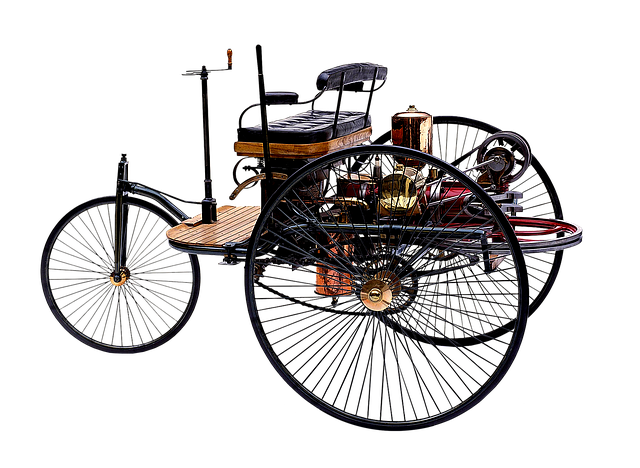Registering a car in California is a straightforward process, but it requires understanding specific rules and gathering essential documents. To ensure a smooth experience, familiarize yourself with California’s car registration requirements, especially regarding VIN (Vehicle Identification Number) verification. This crucial step involves confirming your vehicle’s details through official channels. Once ready, you can complete the process online or visit a DMV office, pay the fees, and obtain your new license plate.
- Understand California Car Registration Requirements
- Gather Necessary Documents for VIN Verification
- Perform Vehicle Identification Number (VIN) Check
- Complete Online Registration or Visit DMV Office
- Pay Registration Fees and Receive Your Plate
Understand California Car Registration Requirements

Before registering your car in California, it’s crucial to understand the state’s specific requirements. One key step is ensuring proper VIN (Vehicle Identification Number) verification. This process involves confirming the vehicle’s identity and history through a mobile VIN inspection or mobile VIN verification service, which checks for any outstanding issues like theft or outstanding loans. California requires this verification as part of the registration process to ensure safety and prevent fraud.
Additionally, you’ll need to meet other standards such as having a valid insurance policy and ensuring your vehicle passes an emission test (if applicable). Keeping these requirements in mind will help streamline the car registration process in California and ensure a smooth experience.
Gather Necessary Documents for VIN Verification

Before you begin the registration process, it’s crucial to gather all the essential documents for VIN (Vehicle Identification Number) verification. This step is a critical part of ensuring your vehicle’s history and authenticity are accurately checked. For a seamless process, prepare the following items. Your vehicle’s title, which should be in your name, is the primary document required. It provides proof of ownership. Additionally, you’ll need to present a valid driver’s license or state-issued ID card.
For a smooth and efficient vin inspection, consider having a list of all previous owners and their contact information handy. This detail can be useful during the verification process. Furthermore, ensure that your insurance card and proof of current registration are accessible, as these might be requested by the California Department of Motor Vehicles (DMV) staff. Having these documents ready enables you to streamline the mobile vin verification process and get your car registered promptly.
Perform Vehicle Identification Number (VIN) Check

Before you can register your car in California, it’s crucial to perform a Vehicle Identification Number (VIN) check. This step ensures that the vehicle is genuine and has not been reported as stolen or had its identity tampered with. You can conduct this verification through several means, including official online platforms or by visiting a local DMV office.
For added convenience, consider opting for a mobile VIN verification service or even a vin inspection conducted by a certified professional. These services allow you to complete the check from the comfort of your home or on-the-go, saving you time and effort while ensuring compliance with California’s registration requirements.
Complete Online Registration or Visit DMV Office

You have two options for registering your car in California: complete the process entirely online or visit a DMV office in person. If you choose to go digital, the California Department of Motor Vehicles (DMV) offers an efficient and convenient online registration system. You’ll need to provide your Vehicle Identification Number (VIN) for verification purposes during the sign-up process. This step ensures that your vehicle is genuine and allows the DMV to access its history. Many services now offer a mobile VIN verification option, making it easier than ever to confirm your car’s details.
Alternatively, if you prefer face-to-face interaction, visiting a local DMV office remains an option. Bring your necessary documents and proof of ownership, and one of their representatives will guide you through the registration process. They’ll also perform a VIN inspection to cross-reference your vehicle information, ensuring accuracy and completeness.
Pay Registration Fees and Receive Your Plate

After completing your vehicle’s registration application, it’s time to settle the fees. The cost for registering a car in California varies depending on the type and age of your vehicle. You can typically pay these fees online or at a DMV office. Once you’ve paid, you’ll receive your registration papers along with a unique vehicle identification number (VIN) plate.
For added convenience, some services offer mobile VIN verification and inspection, allowing you to complete this process without visiting a DMV branch. This can be particularly useful if you have a busy schedule or prefer the flexibility of having your car’s details verified on-the-go. Ensure that the service provider conducts a thorough check to verify your vehicle’s information accurately.
Registering a car in California involves understanding key requirements, gathering essential documents for VIN verification, performing a vehicle identification number (VIN) check, completing online registration or visiting a DMV office, and paying fees. By adhering to these steps and ensuring accurate VIN verification, you’ll successfully navigate the process, ensuring your vehicle is legally registered and ready to hit the California roads.
